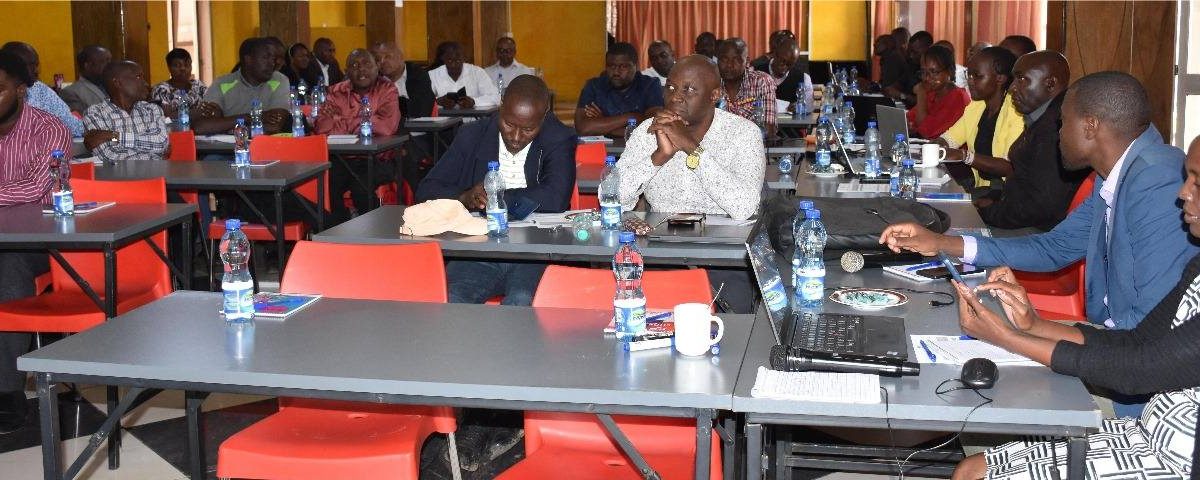The 47 County Governments have the potential to cumulatively generate Sh260 billion annually through own source revenue streams, the Commission on Revenue Allocation (CRA) has claimed. The Commission on Revenue Allocation (CRA) Vice Chairman Commissioner Koitamet Ole Kina said that a 2022 study by the Commission on Revenue Allocation (CRA) found that counties could generate up to Sh260.6 billion annually from sources such as land rates, business permits, parking fees, and market charges.
Consequently, Commissioner Ole Kina advised the County governments to carry out comprehensive revenue mapping to identify their revenue streams and incomes towards increasing their own source revenue (OSR). Ole Kina regretted that despite the counties having a huge potential for own source revenue, the devolved units continued to underperform due to inefficiencies in revenue collection, weak enforcement and unrealistic projections. While noting that the overall national average of Own Source Revenue (OSR) collected in the first quarter of the year currently stood at 65 percent of the potential, Ole Kina explained that harnessing and revitalising domestic revenue mobilisation opportunities remained top priority for county governments to strengthen service delivery.

The Commissioner observed that devolution as enshrined in the Constitution mandated counties to devise sustainable approaches for augmenting revenue mobilisation to enhance socio-economic development, adding that focus has to be shifted from the National Treasury and more attention given to increasing OSR generation to reduce overreliance on national funding. The vice chairman noted that Article 209 (3) of the Constitution mandated counties to impose taxes on property, entertainment and other levies adding that Counties needed to fully exploit the avenue and conduct revenue mapping to identify areas of economic strength for exploitable streams of revenue and income. Commissioner Ole Kina made the remarks during a validation workshop organised by CRA aimed at reviewing the Draft County Own Source Revenue Guidelines.
The CRA has released draft guidelines for counties to improve their own-source revenue collection. The guidelines aim to enhance fiscal autonomy by providing a framework for better revenue management practices, including training programmes and model policies. Ole Kina said the model policy covers key revenue streams like trade licensing, building approval, parking, market access, and housing rent fees.
The guidelines, he added aims at improving the fiscal autonomy of county governments by boosting their own-source revenue (OSR) through better management practices and aiding devolved units in developing their own tariffs and pricing policies for various revenue streams. While emphasizing the need for counties to become financially self-reliant, the commissioner urged counties to reduce overdependence on equitable share transfers from the national government, which currently funds 80 per cent of County budgets adding that internally generated revenue stands at 13 per cent, despite the vast growth potential. “We must rethink our approach to revenue collection and adopt best practices in revenue administration,” he advised.
Counties such as Mombasa, Murang’a, Homa Bay and Nakuru are said to have implemented robust reforms and demonstrated that OSR growth was achievable through effective policies, digitalization and strategic enforcement. Ole Kina said Nakuru had been ranked as the fifth county in generating its own source revenue, adding that it was a testament to the strides it has made in the digitalization of services, a move he said reflects the county’s continued efforts to modernise revenue administration and enhance its financial stability through innovative solutions. According to the Commissioner, during the Financial Year 2023/24, Nakuru County Own Source Revenue was Sh3.
3 billion, which he said represented 5.6 percent of the total revenue collected by all counties. The Commissioner pointed out that the new guidelines being validated are a product of a participatory process involving research, data collection, and analysis adding that they were intended to assist counties in mapping and optimising their revenue sources in a structured and sustainable manner.
He emphasised the importance of devolution in driving local economic growth, but said counties needed financial independence, to reach their full potential. Ole Kina explained that most county budgets still depend heavily on Equitable Share transfers from the National government, which make up about 80 percent of their revenue, while Own Source Revenue (OSR) contributes only 13 percent. During the workshop, Counties were encouraged to automate revenue collection by adopting digital platforms and cashless payment systems, to reduce leakages and improve efficiency.
The Commissioner highlighted the importance of technology in boosting OSR and pointed out that counties using technology were performing much better than those that were not, citing Homa Bay as an example of improved revenue collection due to its investment in automated systems. Ole Kina also urged counties to strengthen enforcement and compliance, which would make a good move to minimise revenue losses through clear policies and strict implementation. Counties were further advised to set realistic revenue targets to align projections with actual collections, which would improve budget performance and reduce pending bills.
Ole Kina stressed on the importance of intergovernmental collaboration and urged counties to work closely with the National Treasury, CRA, KRA, and development partners to adopt best practices in revenue administration. He noted that the national government, through the National Treasury, is considering a unified revenue collection system that all counties could plug into, ensuring that best practices are shared across all 47 counties. Nakuru County Director for Housing, Engineer Maruhi Maina, affirmed that they had successfully adopted the County Integrated Financial Operations Management System (CIFOMS) which he said has streamlined revenue collection processes and enhanced transparency and efficiency.
He said Governor Susan Kihika’s administration was enforcing accountability and fiscal discipline in the management of its resources to deliver better services and enhance equitable economic development. The Director indicated that they were working on various policies to facilitate smooth business operations in addition to enhancing the county’s revenue-generating capacities, enabling it to deliver essential services efficiently and sustainably. He observed that the enactment of the Nakuru County Finance Act 2023 and passing of the Valuation and Rating Bill by the County Assembly had set out the basis of enhancement of Own Source Revenue to avail needed resources for improved service delivery.
.
Business

Counties advised to exploit their potential to increase own source revenue

The 47 County Governments have the potential to cumulatively generate Sh260 billion annually through own source revenue streams, the Commission on Revenue Allocation (CRA) has claimed. The Commission on Revenue Allocation (CRA) Vice Chairman Commissioner Koitamet Ole Kina said that a 2022 study by the Commission on Revenue Allocation (CRA) found that counties could generate...













